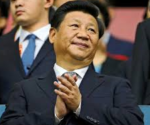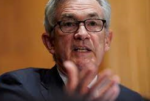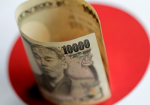(On vacation for the rest of the month. Going to Portugal. Commentary will resume on June 1. Good luck to us all.)The market is a fickle mistress. The major central banks were judged to be behind the inflation curve. Much teeth-gashing, finger-pointing. Federal Reserve Chair Powell was blamed for denying that a 75 bp hike was under consideration. Bank of Japan Governor Kuroda was blamed for keeping the 0.25% cap on the 10-year Japanese Government Bond yield. Even though European Central Bank President Lagarde had indicated previously that rates could be increased within weeks of the end of the bond purchases, many observers embraced it as a new sign that the ECB was belated to hike rates as early as July. For the better part of three weeks, the swaps market
Topics:
Marc Chandler considers the following as important: 4.) Marc to Market, 4) FX Trends, China, Featured, growth, newsletter, PPP, Recession, U.K., US, USD
This could be interesting, too:
Nachrichten Ticker - www.finanzen.ch writes Die Performance der Kryptowährungen in KW 9: Das hat sich bei Bitcoin, Ether & Co. getan
Nachrichten Ticker - www.finanzen.ch writes Wer verbirgt sich hinter der Ethereum-Technologie?
Martin Hartmann writes Eine Analyse nach den Lehren von Milton Friedman
Marc Chandler writes March 2025 Monthly
(On vacation for the rest of the month. Going to Portugal. Commentary will resume on June 1. Good luck to us all.)
The market is a fickle mistress. The major central banks were judged to be behind the inflation curve. Much teeth-gashing, finger-pointing. Federal Reserve Chair Powell was blamed for denying that a 75 bp hike was under consideration. Bank of Japan Governor Kuroda was blamed for keeping the 0.25% cap on the 10-year Japanese Government Bond yield. Even though European Central Bank President Lagarde had indicated previously that rates could be increased within weeks of the end of the bond purchases, many observers embraced it as a new sign that the ECB was belated to hike rates as early as July. For the better part of three weeks, the swaps market has been pricing in a 20 bp rate hike. It peaked not when Lagarde spoke last week but on April 22.
The US 10-year breakeven rate (the difference between the yield of the inflation-protected security and the conventional note yield) rose from 2.60% at the end of last year to a high a little bit above 3.05% on April 22. Since then, it has been trending erratically lower and bottomed near 2.63%, before the CPI report. It finished last week around 2.74%, falling about 12 bp on the week. The three-week decline is the longest since January.
Many observers write and speak as if the Fed needs to catch up to the market. But this seems like a variant of the hubris virus that they often diagnose the central bank with. The relationship is much more complicated. Consider that a week ago, the swaps market was pricing in a terminal Fed funds rate of 3.75%. After elevated CPI and PPI prints, the terminal rate is now, ironically, projected close to 3.0%. Or consider that shortly after the Fed's statement and before Powell's press conference, the December Fed funds futures contract implied a 2.89% yield. It finished last week near 2.63%.
There is an industry built on criticizing the Federal Reserve. The Fed is damned if they do and damned if they don't. It is an easy mark. When it raised by 25 bp in March, it was criticized for not being more aggressive. When the Fed raised rates by 50 bp earlier this month, it was blamed for taking 75 bp off the table. Often, the same voices criticize the Fed for risking a recession.
Many accept that the economic contraction in Q1 was the result of GDP math. Importing too many goods (relative to exports) and accumulating inventories at a slower pace than the record set in Q4 were critical drags. Consumption and business investment rose. That is ultimately what drives the economy. Nevertheless, some pundits play up the risk that the US is on the verge of a recession. We have expressed concerns about tightening monetary and fiscal policy as the economy slows. We brought attention to the doubling of oil prices, which has preceded the last three US recessions. The inventory cycle looks mature and is unlikely to be the tailwind going forward. The build-up of savings and pent-up consumer demand appear to have run their course.
However, the doom and gloom camp is over-hyping the case. Monetary policy is known for its variable lags. The federal deficit may be halved this year, but that still leaves it above 5% of GDP. The US job growth remains impressive. Through last month, non-farm payrolls have risen by over 2 mln this year. It is not far off the pace in the same period last year (~2.2 mln). Weekly initial jobless claims are hovering around 200k, roughly half the pace of May 2021. Yes, the improvement in the labor market will slow, and it will have to slow much more than it has to support a recession scenario after the contraction in Q1.
Like those who see a currency war every year or so, the doom and gloom camp or the always-critical of the Fed crowd are crying wolf. And therein lies the importance of the economic data in the days ahead. There may be no reason to let the facts interfere with a good story, but the economic data may show a solid gain in consumption and continued growth in industrial output. Or, to say the same thing, the data should show an expanding, not contracting, economy.
April retail sales are expected to rise by a solid 1% by the median forecast in Bloomberg's survey after a revised 0.7% (from 0.5%) gain in March. We already know that auto sales were stronger, which likely lifted the headline figure. Some economic models use components for GDP calculations, which exclude autos, gasoline, building materials, and food services (the models pick up the information from different time series), are expected to rise by 0.6% after a revised 0.7% gain from -0.1) in March. Industrial output rose by nearly 3% in Q1, and that pace will not be sustained. Last year, industrial output rose by 0.3% a month. In April, output may have increased by 0.4%.
Among the first places to look at financial conditions biting are the interest rate sensitive sectors, like housing. April housing starts will be reported on May 18. A decline is indeed expected after two months of gains, but the takeaway is that the level of activity is elevated. March housing starts were the highest in 16 years. The same is true of permits.
Another place to look for financial conditions biting is in the translation of foreign earnings into dollars for US companies. Figures cited in Barron's from Sentieo, a financial analytics company, noted that 20 US companies with market caps of more than $100 bln cited the dollar's appreciation as a headwind, which is twice from a year ago. What was left unsaid was that there are around 100 such companies, meaning something on the magnitude of 80% of the giants did not complain about the dollar's appreciation.
In addition to translation, there is an issue of competitiveness too. According to the OCED's model of purchasing power parity, the euro, sterling, and yen have not been this undervalued in at least 30 years. It may not be a short-run consideration, but it can impact the relative competitiveness and exposure of even purely domestic US companies to a foreign competition that may not have been there a couple of years ago.
In addition to the divergence of monetary policy, part of the current political and economic environment is that America's two rivals, Russia and China, are shooting themselves in the foot. America's penchant for exaggerating the strength of Russian strength has again proved wide of the mark. Moscow's ability to project its power will be curtailed. NATO will be bigger than before--more members and a greater presence--and Russia's economy has been traumatized despite the capital-controls induced rouble appreciation. China's Covid response seems over-the-top and is hobbling the economy. Despite the best efforts of the Chinese government, the world has gotten a glimpse of the gap between the Chinese people and the rulers in Beijing. For years, Chinese officials have raised questions about the US model, but the chickens have come home to roost, and China's developmental model is being questioned in new ways.
The sharp drop in Chinese lending in April is a warning of a dismal economic performance as the lockdowns and social restrictions crippled around half of its economy. The silver lining is that Shanghai may appear from the lockdowns shortly, and a "V" type recovery is possible if Covid can be brought under control. There is scope for China to cut its benchmark 1-year medium-term lending facility (MLF) rate, which has remained at 2.85% since being cut by 10 bp in January. A reduction in the MLF at the start of the new week would boost the chances of a cut in the loan prime rate at the end of the week.
Japan has two data points that will be of interest. First, it will report Q1 GDP. It is expected to have contracted by 0.4%-0.5%. The Covid restrictions and earthquake weakened the economy after growing by 1.1% in Q4 22. The government has responded with a spending package, and in any event, the economy already appears to be recovering. Second, Japan will report the national CPI figures for April at the end of the week. The market got a hint of what to expect from the surge in the Tokyo CPI. In addition to rising food and energy prices, the dropping of last year's cuts in cell phone charges will lift measured inflation. Excluding fresh food and energy, Japan's CPI rose above zero in April for the first time since July 2020.
The market does not pay much attention to Japan's trade figures. That seems to be the most straightforward explanation why so many observers insist on characterizing Japan as export-oriented. Japan will report its April trade figures early on May 19 in Tokyo. A sharp deterioration is expected (~JPY1.2 trillion deficit from a JPY414 bln shortfall in March. It will be the ninth consecutive monthly trade deficit. In April 2021, it recorded a nearly JPY227 bln trade surplus.
The UK reports employment figures, April CPI, and retail sales. Employment growth is expected to slow, and average earnings growth will likely be little changed. Economists anticipate the unemployment rate to remain in the trough near 3.8%, which is also where it was at the end of 2019. Still, it is understood to be a lagging indicator. UK retail sales likely fell for the third consecutive month when gasoline is excluded. With two exceptions, it has been falling since last May as the cost-of-living squeeze intensifies. Meanwhile, CPI will surge. A 54% rise in the household energy cap was announced in February, effective in April. That alone will lift the month-over-month rate by more than 1.5%. The Bank of England forecast the year-over-year rate to rise to 9.1% from 7.0% in March.
Lastly, we note that UK Prime Minister Johnson is expected to address Northern Ireland's protocol in a speech in the coming week. Tensions have been rising, and the recent election defeat for the Democratic Unionist Party allows it to play the obstructionist role. It refuses to join the government unless the protocol that was a result of extended negotiations is jettisoned.
Turning to the price action:
Dollar Index: The Dollar Index rose for the sixth consecutive week and pushed to almost 105.00 for the first time since late 2002. The main driver is the aggressiveness of the Federal Reserve and, secondarily, the poor news stream from Europe, Russia, and China. The momentum indicators are stretched but do not appear poised to turn lower. The 104.00 area may provide support as it capped the upside for a little bit. There is little on the charts until closer to 106.00.
Euro: The single currency continues to struggle to sustain even minor upticks. It has fallen for the past four sessions and made a new five-year low near $1.0350 ahead of the weekend. A break of the 2017 low ($1.0340) leaves very little to deter a test on parity. Given the elevated volatility (three-month ~9.5%), a move to $1.0 is not so much a tail risk. The $1.05 area now may offer the nearby cap. A convincing move above $1.06 would suggest a bottom of some import could be in place.
Japanese Yen: The exchange rate and US yields continue to move nearly in lockstep. The direction seems more important than the level on a day-to-day basis. In the first four sessions last week, the 10-year US yield fell nearly 30 bp, and the dollar fell from around JPY130.50 to about JPY128.30. The yield rose ahead of the weekend, and the dollar traded a full yen off the lows. The momentum indicators have pulled back as one would expect, with a nearly 3% pullback in spot. We often find the dollar-yen pair to be rangebound, and when it does trend, it frequently is moving to a new trend. We suspect that the JPY127.00 area marks the lower end of the range.
British Pound: Sterling fell for the fourth consecutive week, and it is poised to fall further. The $1.20 area is the next important target. There have been 23 sessions since April 13, and sterling has fallen in all but four sessions, and none of them was last week. In fact, sterling takes a seven-day slump into next week's activity. It fell to almost $1.2155 before the weekend, its lowest level since May 2020. The momentum indicators are stretched but show little inclination of turning. Initial resistance is likely around $1.2250 but probably takes a move above $1.24 to be of technical significance.
Canadian Dollar: The close movement of the yen and US 10-year yield has a parallel with the Canadian dollar and the S&P 500. For the past 30 and 60 sessions, the correlation of the changes is tighter with the Canadian dollar and the S&P 500 than between the yen and US yields. The US dollar reached almost CAD1.3080 on May 12, its highest level since late 2020. The recovery in US equities ahead of the weekend sent the greenback to almost CAD1.2900. A break of the CAD1.2850 area is needed to boost the chances that a high is in place. The MACD appears poised to turn down from extreme levels. The Slow Stochastic has fluctuated a bit but is essentially flat this month despite the rise in spot. Macroeconomic fundamentals look to be among the best in the G7.
Australian Dollar: Since the central bank induced bounce in the Australian dollar (May 4), it has tumbled about 6% to the May 12 low of around $0.6830. Nearly half of that decline was recorded on May 11 and 12, yet the bounce ahead of the weekend was not particularly impressive. It was unable to rise above the previous day's high (~$0.6955), and the close was still the second lowest since mid-2020. The Aussie fell by 2.3% last week, and it was the sixth weekly decline in the past seven. It lost around 8% this run. The momentum indicators are stretched. The MACD could turn higher in the coming days, but the Slow Stochastic is still trending lower in oversold territory. The next important target on the downside is around $0.6760, the halfway point of the Aussie's rally from the pandemic low near $0.5500 in March 2020 to slightly above $0.8000 a year later.
Mexican Peso: The peso's resilience is impressive even if under-appreciated. While the US dollar has been appreciating multiyear highs against the other major currencies, the peso has held its own. The peso has appreciated by a little less than 2% this year. Leaving aside the Russian rouble, only two other emerging market currencies are up for the year. The Brazilian real has appreciated by 9.6%, and the Peruvian sol has gained nearly 6%. The swaps market is pricing in 135 bp rate increases in the next three months when there are three meetings, which is about what the Fed funds futures have priced in for the Federal Reserve. The momentum indicators have flatlined near mid-range. Support is seen near MXN20.00, which held earlier this month. Initial resistance may be around MXN20.25-MXN20.30. It takes a four-day rally into the week ahead.
Chinese Yuan: There is nothing special about the Chinese yuan in some ways. It is falling like nearly all the currencies. The yuan has depreciated by about 6.4% so far this year. The bulk of the move has taken place in the last four weeks. The greenback rose from around CNY6.37 to reach a high a little more than CNY6.81 before the weekend. We suspect the dollar would be higher, but the PBOC seems to be moderating its rise by setting the dollar's reference rate lower than the market projects consistently since returning from the labor holidays earlier this month. We suspect the yuan may begin stabilizing and do not expect it to rise above CNY6.85. Initially, support may be in the CNY6.72-CNY6.74 area.
Tags: #USD,China,Featured,Growth,newsletter,PPP,recession,U.K.,US






